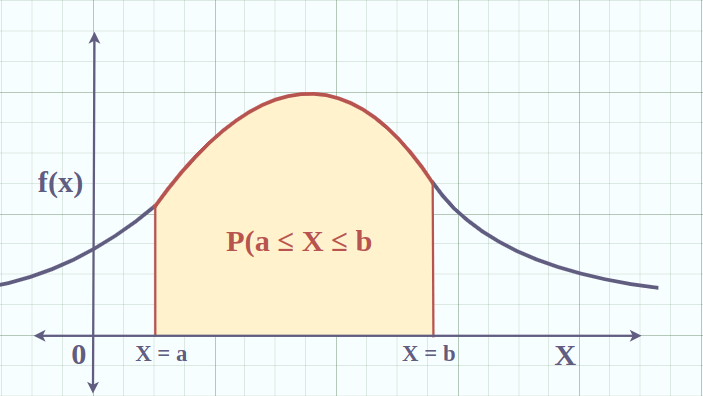One application of the double integrals over general regions is found in calculating the probability of two random variables. Let's start by defining some notions.
Density function of one variable
Let's consider the following figure:
Let's consider the point (a, f(a)) of the curve. f(a) represents the probability density of this point. Likewise f(b) represents the probability density corresponding to the point (b, f(b)). Any point of the curve has a density probability. The area under curve between X = a and X = b represents the sum of all the probability densities of all the points of the curve between f(a) and f(b).. It represents the integral of the function f over the interval [a, b]. It represents also the probability that any variable between a and b falls between the range [a. b]. The function f is the probability density function of f over [a, b].
Joint Density function of two variables
The notion of probability density function of one variable can be extended to two variables. Since we deal with two variables, we use double integrals. The probability density of two variables X and Y is called joint probability density. In this case, the probability density function of two variables X and Y is called joint probability density function.
Definition I
Let's consider a pair of continuous variables such as the birthdays of two people. The probability that the pair (X,Y) falls in a certain region D is given by:
Definition II






No comments:
Post a Comment